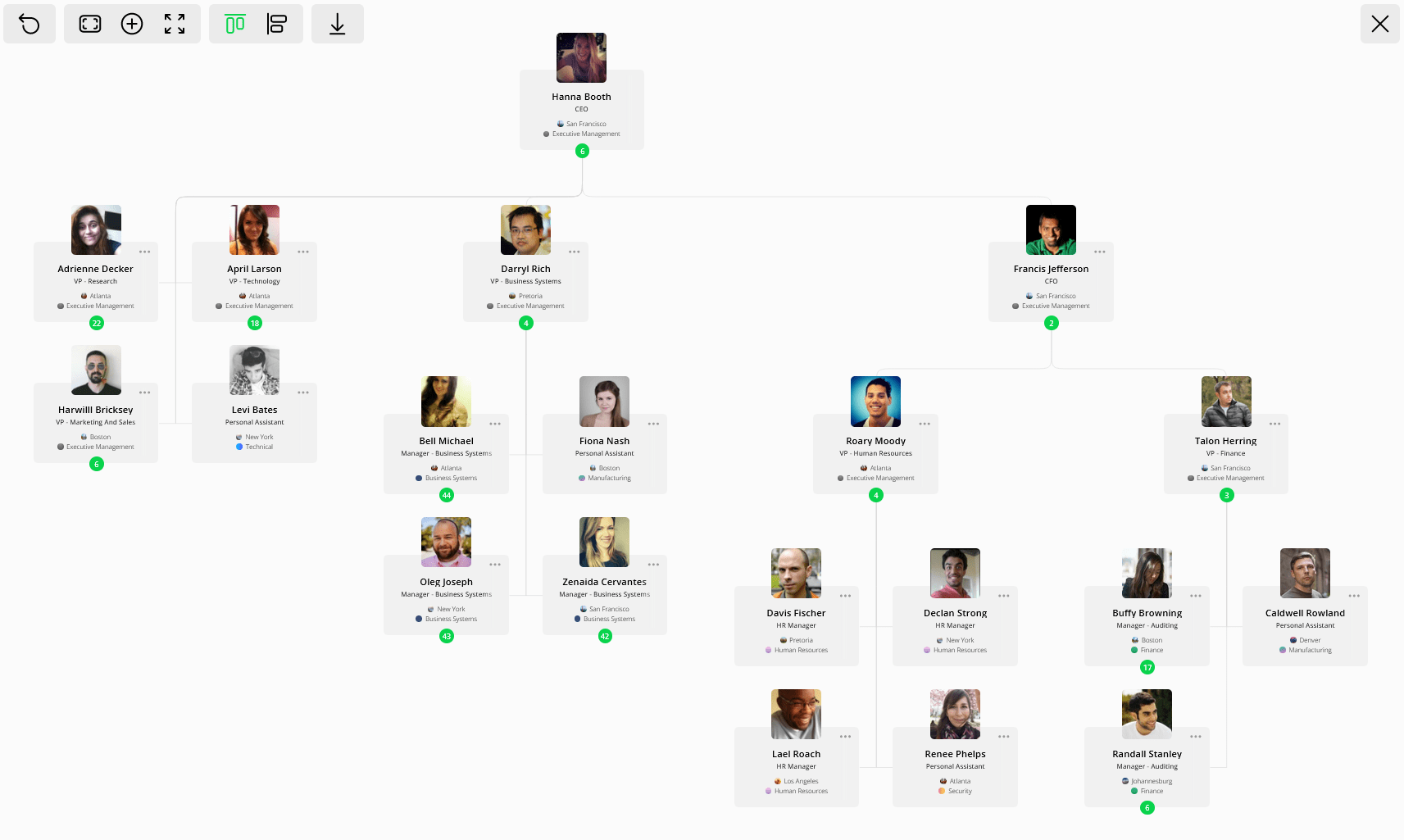Flat vs Vertical Corporate Hierarchy: Which One Works for You?
Discover the key differences between flat and vertical corporate hierarchies, their pros and cons, and how to visualize your company's structure effectively.

Ah, the corporate hierarchy. It’s like the backbone of a business, giving your organisation's structure an order.
Picture a ladder: at the top, you've got your CEO and other executives. Below them, a series of middle managers, supervisors, and finally, the employees. This structure helps show roles, responsibilities, and the chain of command, ensuring everyone knows who's in charge and who they report to.
But hold on a second!
Not all ladders are created equal. Some companies have what you'd call a "flat" hierarchy, while others opt for a "vertical" one. What's the difference, you ask? Let's dive in.
What is a Flat Corporate Hierarchy?
Imagine a pancake. Flat, right?
That’s essentially what a flat corporate hierarchy looks like. In this setup, managers have a broader span of control and more autonomy. There are fewer middle managers, which means decisions can be made swiftly without the bureaucratic drag.
The Pros and Cons of a Flat Corporate Hierarchy
So, what’s to love about flat hierarchies?
For starters, speed. With fewer layers to navigate, decisions can be made and implemented faster. This makes it ideal for small, agile teams that thrive on independence and agility. Empowering of employees is another big plus—there’s less micromanaging, and people are trusted to do the job.
But (and there’s always a but), this setup isn’t without its challenges.
As the company grows, a flat structure can start to feel more like a squished pancake. Top leaders can become overwhelmed with the increased headcount. Communication might suffer without those crucial middle managers to connect the dots between departments. It’s a delicate balance—too flat, and you risk chaos; too structured, and you lose agility.
Summary of the Pros:
- Enhanced Communication: With fewer layers, information flows more freely and quickly. It’s like a conversation rather than a game of telephone.
- Empowerment: Employees often feel more empowered and valued, knowing their voices can be heard without layers of bureaucracy.
- Flexibility: Decisions can be made faster, fostering a more agile and adaptive business environment.
- Innovation: Encourages creativity and innovation since everyone’s ideas are more likely to be heard and considered.
Summary of the Cons:
- Role Ambiguity: With fewer defined roles, employees might feel confused about their responsibilities.
- Scalability Issues: As companies grow, maintaining a flat structure can become challenging and chaotic.
- Leadership Overload: Leaders can become overwhelmed with too many direct reports and not enough time to focus on strategic initiatives.
- Conflict Management: With everyone on the same level, resolving disputes can sometimes become more complex and personal.
What is a Vertical Corporate Hierarchy?
Now, let’s flip the script.
A vertical corporate hierarchy is more like a skyscraper. Tall, structured, and packed with levels. Here, there are more layers between the top leadership and the individual contributors. This structure brings a sense of order and allows for specialization and consistent processes.
The Pros and Cons of a Vertical Corporate Hierarchy
Vertical hierarchies have their merits. They’re great for large organizations where specialization is key. Processes are standardized, and there’s a clear chain of command, which can make roles and responsibilities crystal clear. It also allows for focused expertise, with managers honing in on specific areas.
However, all that structure can come at a cost. Red tape and bureaucracy can slow down decision-making, making the company less agile. Information might get distorted as it trickles down the layers, and power becomes concentrated at the top, which can be risky if those at the top make poor decisions.
Summary of the Pros:
- Clear Roles and Responsibilities: Employees know exactly what is expected of them and who they report to. It's structured and straightforward.
- Efficient Management: Leaders can focus on strategic decisions while middle managers handle day-to-day operations.
- Scalability: Easier to manage and scale as the company grows, with clear promotion paths and career progression.
- Control and Oversight: Better control over processes and quality, with a clear chain of command.
Summary of the Cons:
- Slower Decision-Making: Information must pass through multiple layers, which can slow down the decision-making process.
- Reduced Communication: Risk of information getting lost or distorted as it moves up and down the hierarchy.
- Employee Dissatisfaction: Employees at lower levels may feel undervalued or overlooked, leading to lower morale and engagement.
- Inflexibility: Can be less adaptable to change due to rigid structures and resistance to new ideas.
How to Visualize Your Corporate Hierarchy
Whether you’re a small business owner or a manager in a large organization, it’s important to have an accurate, up-to-date view of your corporate hierarchy.
The best tool with which to do this is an organizational chart diagram.
Org chart diagrams are a perfect way to help you visualize your organization's chain of command since they typically display your organizational structure in a top-down reporting hierarchy, like this:

Org chart diagrams themselves are typically created using organizational chart software, also referred to as org chart software. By using a software-based org chart to visualize your corporate hierarchy, as opposed to an org chart diagram built manually in a spreadsheet or printed on paper, you are able to do certain things that you otherwise couldn't with a static org chart.
For example, modern org chart tools like OneDirectory allow you to highlight "paths" within your organization's pecking order. This makes it easier to visualize the command structure in more complex organizations where there may be many layers of management.
Choosing different starting points from which to view your corporate hierarchy is another useful feature found in modern org chart software tools. This helps you to visualize the command structure within specific offices, departments, and teams and is difficult to do with a static org chart diagram.
Wrapping It Up
Choosing between a flat and vertical corporate hierarchy isn’t a matter of right or wrong, it’s about what fits your organization’s needs. Flat hierarchies offer speed and autonomy but can struggle with scale. Vertical hierarchies provide structure and specialization but can be slow and rigid.
Think of your company as a car. Do you need a sleek, fast sports car (flat hierarchy) or a robust, reliable SUV (vertical hierarchy)? Both will get you where you’re going, but the ride will be very different.
So, next time you’re examining your corporate structure, consider what will drive your company forward best.


